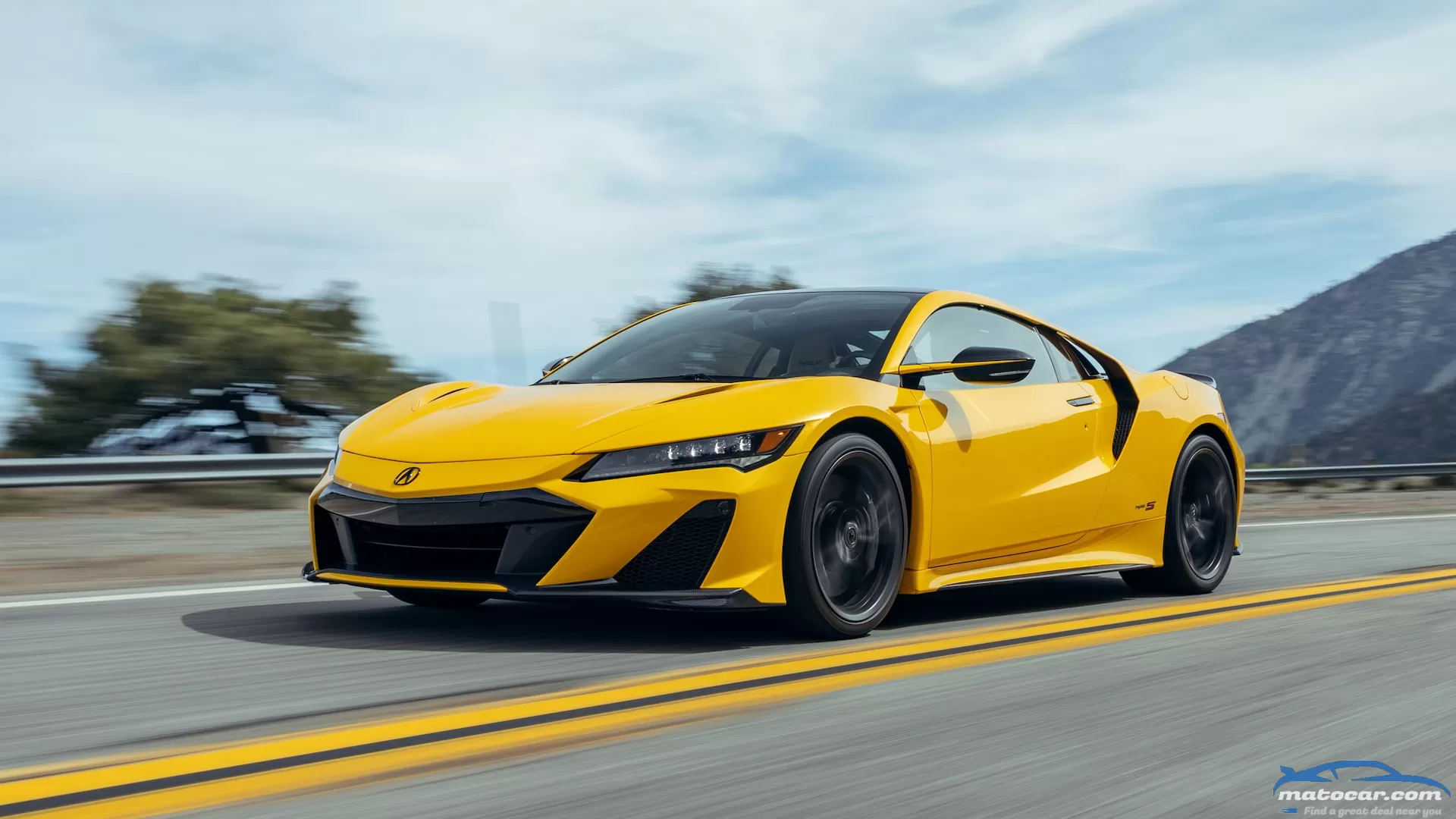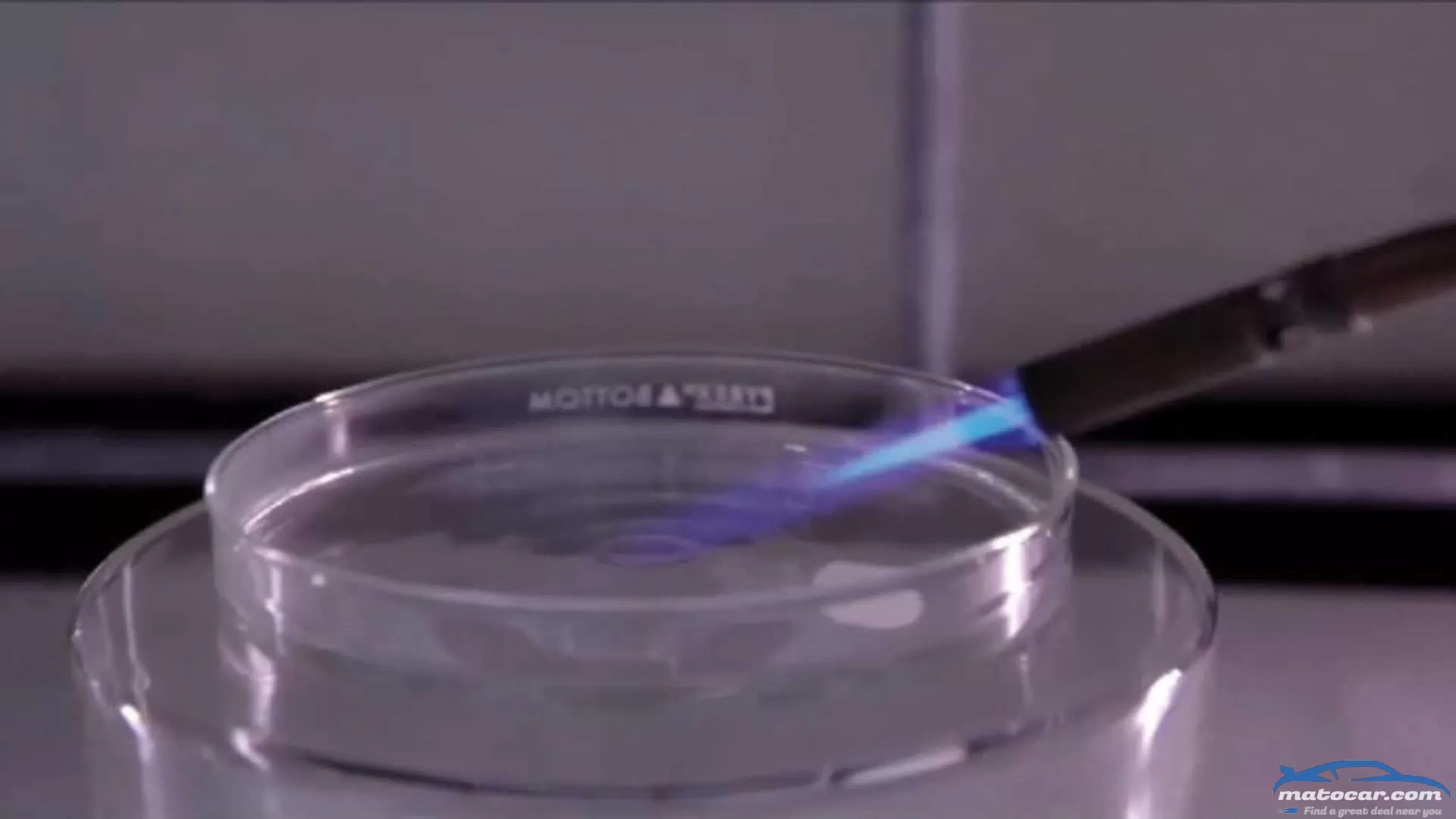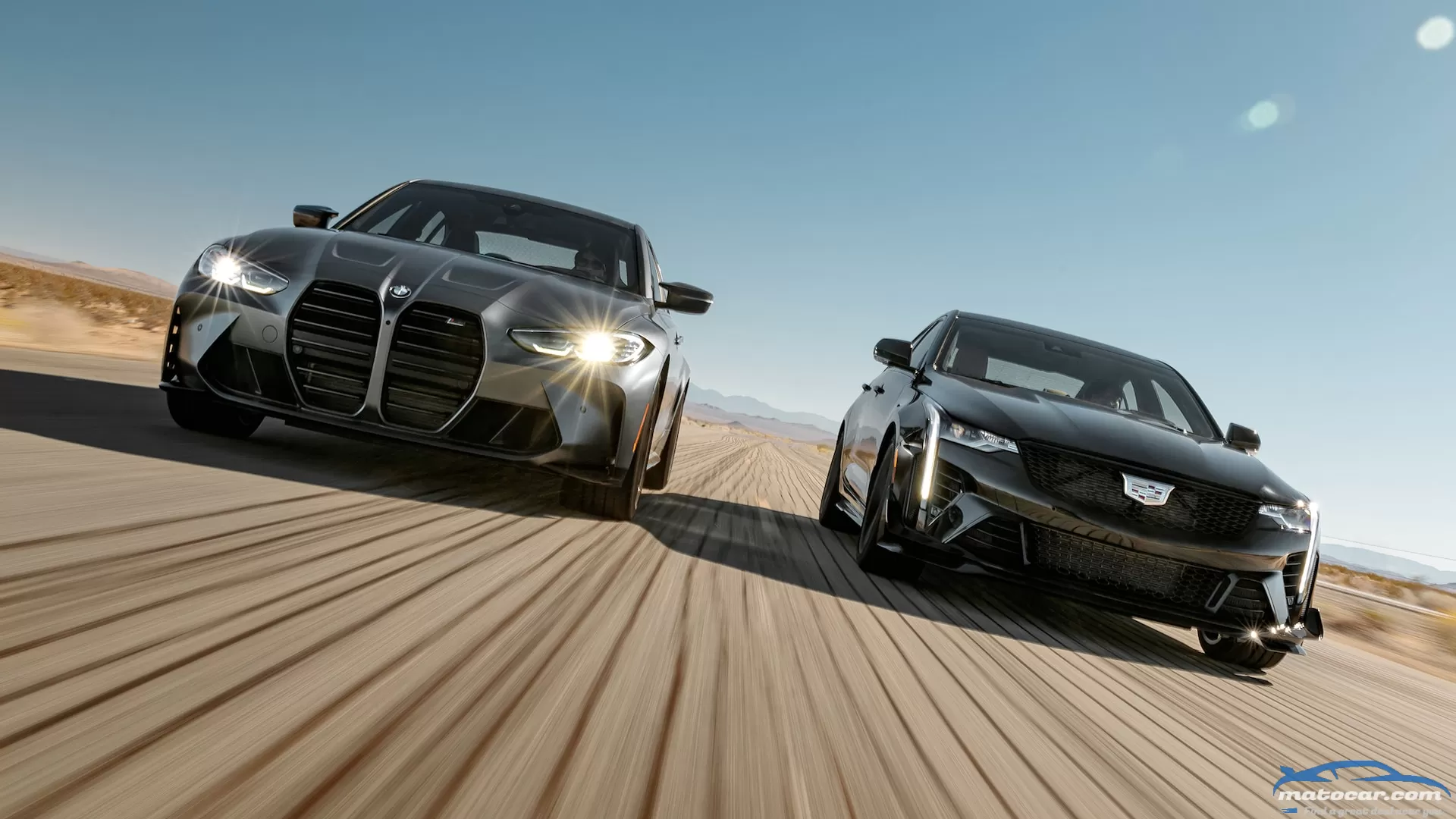2022 Acura NSX Type S First Test: Doing It GM-Style

Pros
- The most satisfying modern NSX, Engine pulls hard, Strong lateral grip.
Cons
- It's dying just as it gets good, Needs a price-appropriate interior, Lacks ultimate steering feel.
For decades, General Motors was notorious among its own loyalists for underfunding and underdeveloping a promising new car, expressing shock when initial sales excitement evaporated, reluctantly spending the money it should have in the first place to make the car as good as it should have been from the start, wondering why sales didn't rebound despite the tarnished reputation, then canceling the car once that it was finally good (see: Pontiac Fiero). Acura's parent company, Honda, has collaborated with GM in the past and continues to collaborate with GM today, and this is one tradition it shouldn't adopt. Case in point: the 2022 Acura NSX Type S.
Not to put too fine a point on it, but the Type S is what the NSX should've been from day one. The reborn NSX held such promise, and Acura engineers benchmarked the right cars. Their insistence in thinking like Honda engineers, though, and worrying about how practical their mid-engine supercar was and how it drove in Ohio winters, compromised its final form. They studied the Ferrari 458 Italia but built a car that didn't drive anywhere near as well or as viscerally.
The limited-edition Type S makes great strides toward righting that wrong. It's far more engaging to drive than any NSX before it. Much of the feel and feedback missing from the standard car has finally broken through in the Type S.
Test Numbers Trail Regular NSX's
Unfortunately, it seems to have come at the cost of some performance. Despite driving better than any other NSX we've tested, the Type S is also the slowest NSX we've ever tested. At 3.4 seconds to 60 mph, it's 0.4 second behind the quickest we've evaluated, and it doesn't get any better by the quarter-mile mark. To get there, the Type S needs 11.6 seconds, and it's traveling at 120.7 mph by the finish line, 0.4 second and 3.3 mph slower than the quickest one. It's not down to a bad launch, either, because the Type S is 0.2 second slower accelerating from 45 mph to 65 mph than the quickest NSX we've tested. This despite the Type S being the most powerful NSX ever at 600 hp and 492 lb-ft, 27 hp and 16 lb-ft more than any other.
It's worth saying, though, that the NSX Type S experience is delightful. The engine revs very quickly and has a broad powerband thanks to the pancake electric motor mounted between the engine and transmission. It pulls hard all the way to redline, and the transmission, in Track mode, won't upshift until you've actually reached the redline, so you get every last pony. It's also happy to not upshift and let the engine wind back down if you lift off the throttle, helpful on a twisty road with short straights between tight corners. And despite all the electrification, the powertrain even manages to sound pretty good for a V-6. The engine noise is surprisingly melodious, and the turbo flutter is icing on the cake.
Back to the instrumented testing results, it wasn't any better going the other way. Stopping the Type S from 60 mph required 103 feet, a massive 8 feet longer than the best one we've tested. On a mountain road, that translated to several instances of standing on the brakes and not getting the stopping power a 600-hp car ought to have. Making the experience somehow worse, the squishy, spongy brake pedal response provides no feedback. Better brakes would let this car go down the road considerably faster.
There is a bright spot in the Type S' numbers, and it's shining on the handling results. Pulling 1.03 average lateral g on the skidpad ties it with the stickiest NSX, as does its 23.2-second figure-eight lap time, though the 0.89 average g it pulled on in the figure eight was 0.03 g off the leader.
And you know what? We're OK with all of that. We're willing to give up a tenth here and two tenths there for a car that drives better. Still, this should've been the starting point six years ago, not the swan song.
You do still have to drive it like an NSX, though. To get the most out of this powertrain, you need to treat it the way your high-performance driving instructor told you not to. Brake early, point it at the apex, and then get back on the power as soon as possible. Before the apex if you can. Normally, this delivers guaranteed understeer, but in the NSX, the front motors go to work, the nose bites, and it pulls you through the corner while accelerating hard. You can actually correct understeer by going to the power. Once you figure this out, the car becomes far more impressive than it is when driving it like a typical all-wheel-drive car.
Tips For the Next One (Which Isn't Coming)
Were this car to get the next generation it deserves, there are a few other components that could be further improved, as well. Body control, for one. The Type S is stiff, which is fine, but it lacks compliance. It's bouncing around way too much on bumpy pavement, making you constantly chase it with the steering or back out of throttle. It's especially bad in big brake zones where the car starts shimmying around in its lane. It's all manageable, but it shouldn't have to be managed. Tie it down, and, again, the car could go down the road noticeably faster.
The steering is better than before, but it could be even better still. In this case, it's not so much holding the car back as it isn't making it better. It's very precise, but it lacks feel. Other companies have figured out how to get steering feel out of a car with electric motors powering the front axle, and Acura could, too.
Then, of course, there's the interior. It was never up to snuff, and it still isn't because it hasn't changed. It looks like an Acura interior, and Acura doesn't make $200,000 interiors. A next-generation car would need a complete interior redo with much less plastic, a much more expressive design, and for the love of all that's holy, a modern infotainment system with a volume knob. You can't put Civic parts or even TLX parts in a car priced nearly on par with an entry-level Ferrari.
Hopefully, Acura will get all those details right when the NSX returns as an EV in the future—as it's promised to, after a hiatus—but this still feels like a missed opportunity for the high-performance hybrid iteration of the car. The Type S proves the current NSX formula wasn't fundamentally flawed—it was just unfinished. It's a shame this car missed the mark so widely that its sales can't support a second generation of this model to finish the job. If the NSX Type S is any indication, it could've been great. Instead, Acura is pulling a GM and canceling it just as it started to get right. Everyone loses.
Looks good! More details?2022 Acura NSX Type S Specifications BASE PRICE $171,495 PRICE AS TESTED $185,995 VEHICLE LAYOUT Mid-engine, 2 front and 1 rear motors, AWD, 2-pass, 2-door hatchback ENGINE, MOTOR Twin-turbo port- and direct-injected DOHC 24-valve 60-degree V-6, plus 3 permanent-magnet electric motors POWER (SAE NET) 520 hp @ 6,500 rpm (gas), 72 hp (comb front elec), 47 hp (rear elec); 600 hp (comb) TORQUE (SAE NET) 443 lb-ft @ 2,300 rpm (gas), 108 lb-ft (comb front elec), 109 lb-ft (rear elec); 492 lb-ft (comb) TRANSMISSIONS 1-speed auto (fr), 9-speed twin-clutch auto (rr) CURB WEIGHT (F/R DIST) 3,903 lb (42/58%) WHEELBASE 103.5 in LENGTH x WIDTH x HEIGHT 178.5 x 76.3 x 47.8 in 0-60 MPH 3.4 sec QUARTER MILE 11.6 sec @ 120.7 mph BRAKING, 60-0 MPH 103 ft LATERAL ACCELERATION 1.03 g (avg) MT FIGURE EIGHT 23.2 sec @ 0.89 g (avg) EPA CITY/HWY/COMB FUEL ECON 21/22/21 mpg EPA RANGE, COMB 328 miles ON SALE Now Show AllYou may also like
Wow, the claims Nanotech Energy makes for its new graphene battery, just presented at CES Unveiled, are impressive: It retains more than 80 percent of its rated capacity through 1,400 cycles, can charge "18 times faster than anything that is currently available on the market," maintains performance at extreme temperatures (-40 to 140 degrees F), holds charge at temperatures as high as 350 degrees and won't catch fire when penetrated with a nail or heated to more than 1,300 degrees, don't require exotic materials, can be manufactured on existing equipment in various form factors (cylindrical, pouch, etc. ), and is going to be produced in a new plant in Nevada slated to open in the fourth quarter of 2022.Given all that, we wouldn't be surprised to learn that driving an EV powered by such batteries also promoted weight loss and prevented tax audits. Here's what we know about the Nanotech Energy graphene battery.Graphene Battery ElectrodesGraphene has been making a lot of news lately, and we explained what it is here, but here's a quickie recap: the graphene in use here is a sheet of one-atom-thick carbon. Nanotech Energy is using graphene sheets to transfer energy to and from its new batteries. Graphene is extremely strong yet pliable, which makes it capable of stretching as the lithium ions come and go from the electrodes, causing volume changes. Graphene's strong electrical conductivity lowers the battery's internal resistance, which lowers internal heat generation, enabling faster charging.OrganoLyte ElectrolyteNanotech Energy has yet to release exact chemical specifications of its proprietary liquid electrolyte, but it has provided MotorTrend with some general information. Most electrolytes in use today involve dissolving a lithium salt in a liquid material composed primarily of linear and cyclic chain carbonates (molecules that involve a carbon atom attached to three oxygen atoms). These liquids are typically flammable (see the photo below). OrganoLyte reportedly is not, if photos (at top) of a propane torch applied to the material are to be believed.While no specifics have been confirmed, the name suggests the material still centers around organic chemistry (meaning its molecules involve carbon atoms and covalent bonding, not ecological farming), and we're assured they're not exotic or expensive.New Proprietary SeparatorThe graphene battery electrodes must be separated by a material through which the ions transfer, and here again Nanotech Energy has replaced the typical polyolefin separator with a new material that improves on polyolefin's thermal stability. This also helps to make the batteries safer.Easy to ManufactureCurrent manufacturing equipment and processes currently in use to make lithium-ion pouch and cylinder batteries can produce Nanotech Energy's graphene battery, and a factory designed to build them is currently slated to open in late 2022.When Can I Buy a Graphene Battery?Perhaps as early as next year, but we expect initial production to concentrate on the consumer electronics market. That's because it's extremely unlikely that sufficient durability, reliability and safety testing on all these new materials when applied toward an automotive use case can be completed in less than a few years.
The RML Short Wheelbase (SWB) is not a Ferrari. It's inspired by the classic 250 GT SWB, but it's a new build powered by a modern-era 5.5-liter Ferrari V-12. Think of it as the best sort of homage—not a replica, not a restored, but something tweaked, improved, and usable. The images you're looking at are the first we've seen of the preproduction model, the one RML will use for durability testing. A lot of prepro mules are ugly, taped-together things with temporary lights and lots of warts. Not this RML—it's undeniably gorgeous.This isn't RML's first rodeo. The outfit has been doing kits to make the Aston Martin DB4 and DB5 continuation cars road legal, and even converted an Aston Martin Vulcan for road use. It's dabbled in stranger projects, too, like building a Nissan-GT-R-powered Juke-R crossover for that automaker's European operations. The SWB, though, is something different.And it's real. That's the important part. Whatever happens with the RML SWB at this point—and given where the market for things like this is right now, we doubt RML will lack for customers if they can bring the car to production—this prepro mule is a beautiful, physical testament to the enduring appeal of Golden Era Ferraris. RML says production will start soon, for whatever that's worth.This car will be put through its paces at the UTAC proving grounds (formerly Millbrook, built by GM and modeled after the Milford facility in the U.S. ), which will surely create some wear and tear. Rather than finish it to a lesser standard before it deteriorates, RML decided to make it look nice and grab a set of beautiful images beforehand. This, we greatly appreciate, because who doesn't love to gawk at a beautiful shape? That said, we hope RML isn't afraid to show the SWB doing its thing on the track, warts and all.
We're at the end of an era for luxury sport compact sedans. The segment that BMW invented with the 1986 M3 has long embraced change. The little four-cylinder homologation specials that matured the segment beyond icons such as the 2002 eventually became V-8-powered cruise missiles in the early '00s. The engines have since downsized to forced-induction sixes as times changed, and with nearly every automaker now promising to electrify their lineups in the near future, we're witnessing yet another transition. But thanks to cars such as the new 2022 BMW M3 Competition and 2022 Cadillac CT4-V Blackwing, the internal combustion luxury sport compact sedan is going out with a bang.Spec RundownPitting the M3 Competition (the top dog of the M3/M4 lineup) against the CT4-V Blackwing (effectively a reskinned ATS-V) may seem like a mismatch, but there's a method to our madness. The ATS-V, despite never winning a comparison test, had always been one of our favorite vehicles in the segment. The new CT4-V Blackwing, simply put, makes the ATS-V better. Its 3.6-liter twin-turbo V-6 gets a small output boost, now churning out 472 hp and 445 lb-ft of torque, and it's paired with an optional quick-shifting 10-speed automatic (a six-speed manual is standard). It's also crucially fit with the latest generation of MagneRide dampers, and well, that's really about it. Prices start at $59,900, but the CT4-V Blackwing you see here stickers for $80,235.With 473 horsepower and 406 lb-ft of torque spilling forth from its 3.0-liter turbocharged I-6, the standard M3 seems to be an even matchup for the Cadillac. Except when we drove the latest manual-equipped M4 (the two-door version of the M3) back to back with the CT4, it was no competition—the Caddy was just plain better to drive. More fun, more planted, and more capable, it made the M4 feel like a midgrade M440i. So, with an M3 Competition on hand and in the interest of making things, well, interesting, we decided the M3 Competition would take the M4's place.The Competition turns the wick up a bit on the basic M3/M4 formula. Thanks to more boost and upgraded cooling, output rises to 503 hp and 479 lb-ft of twist. To make the most of the newfound power, BMW equips the Competition with an eight-speed automatic, and on our test car, defeatable all-wheel drive (meaning you can force it into a rear-drive-only mode). Prices for the M3 start at $70,895, while the all-wheel-drive M3 Competition xDrive starts at $77,895. A good chunk of our M3 Competition xDrive's $108,545 sticker is eaten up by optional M carbon-ceramic brakes ($8,150) and the dividing (literally) M Carbon bucket seats ($3,800), though the vast majority of the options on our test car are inconsequential cosmetic and luxury options.Hitting the RoadAlthough the outright performance of both the CT4-V Blackwing and M3 Competition is what will get buyers into showrooms, how they drive in the real world is what will sell them. So let's ignore the numbers, shall we? May the most fun-to-drive car win—because after all, "fun" is what this segment is all about.Riding on GM's rear-drive Alpha platform, the Cadillac is, as senior features editor Jonny Lieberman puts it, "a stud." Aided in part by the latest MagneRide dampers and more accessible Performance Traction Management (PTM) modes (now handily operable via a switch on the steering wheel instead of buried in fiddly menus), the CT4-V Blackwing shines on a good back road. Steering is quick and communicative; the chassis feels light, poised, and well balanced; and the car is damn near impossible to upset. The Cadillac's brakes are worthy of praise, too. Despite lacking fancy (read: expensive) carbon-ceramic brake rotors, we are enamored by the steel rotors' stopping power and the CT4's brake tuning. "Makes the M3 Competition feel like it has 320i brakes," features editor Scott Evans said. "Immediate bite, perfect modulation, and it stops so much harder than the BMW."If the Cadillac has a weak spot, its low-revving V-6 is a good candidate. We weren't taken with this engine back when it first appeared under the hood of the ATS-V, and the addition of 8 extra horsepower hasn't made it any better. That's not to say the CT4-V's powertrain is bad. The twin-turbo V-6 is punchy and delivers a broad torque curve, while the 10-speed auto is among GM's best performance automatics yet, with quick, decisive up- and downshifts, and bang-on tuning for hard driving. It's just so … incredibly uninspiring, with a dull, flat exhaust note and a relatively low 6,500-rpm redline. A naturally aspirated V-8—like the one currently available in the CT4's Chevrolet Camaro SS 1LE platform mate—would do much to wake the CT4-V Blackwing up.The M3 Competition, on the other hand, feels as if its "engine runs on Tannerite," as deputy editor Alex Stoklosa puts it. The Bimmer is explosively powerful and gloriously unhinged. Capable of revving to 7,200 rpm, the M3's inline-six feels like a Minuteman missile on a hair trigger, throwing its power down so violently that we question its 503 horsepower rating.But the M3 is more than just an underrated engine. In a welcome change of pace from modern BMWs, steering is quick, and feel is light but direct. The all-wheel-drive system is impressively neutral, too, helping tame the manic engine without negatively impacting steering feel. "The chassis feels very balanced front to rear," Stoklosa said, "and I found it very easy to transition between over/understeer. It's supremely easy and satisfying to meter out just enough throttle to tuck the nose in or kick the M3 into a controllable, easily placed slide."Still, it's not all roses for the BMW. For starters, there are way too many adjustable settings in the M3 and no easy way to cycle through them while on the move; it is much easier to find your Goldilocks setting in the Cadillac. Some editors found the BMW's carbon-ceramic brakes difficult to modulate smoothly when driving hard, though we were all impressed by their stopping power.Do Numbers Even Matter?With any car—but especially performance cars—it's really tempting to get bogged down in the numbers. Surely, they must tell us something, right? Honestly, though, they really don't in this particular case. There will always be cars that are quicker or faster than a BMW M3 Competition and Cadillac CT4-V Blackwing. These cars—among the last of their kind as we approach widespread electrification—are about the way they feel, the way they drive. The emotional response rises above other considerations.You're more than welcome to geek out over performance numbers by scrolling down to the chart at the bottom of the page, but spoiler alert: The more expensive, more powerful, grippier M3 comes out ahead in all of our instrumented tests. But again, in this particular case, so what?Which Car Is Best?When it comes to picking the winner, ignoring everything but the way these vehicles make us feel when unleashed on our favorite roads, the BMW M3 Competition earns the victory. The Cadillac CT4-V Blackwing is a fantastic riding and handling car that's ultimately held back by an uninspiring engine and a general lack of fireworks. The M3 Competition, on the other hand, is everything we're going to miss about internal combustion—loud and unapologetic but also an absolute joy to drive. It's an engaging and organic powder keg and a return to form for BMW. Just a shame about that nose, no?2nd Place: 2022 Cadillac CT4-V BlackwingPros: Well-balanced chassis with great handlingSuperb brakesRelatively cheapCons: Uninspiring engineCould handle more powerBoring exhaust note1st Place: 2022 BMW M3 CompetitionPros: Unhinged engineTransparent all-wheel-drive systemExceptional steeringCons: PriceyCarbon-ceramic brakes aren't worth the upgradeIt's quite rough to look atPOWERTRAIN/CHASSIS 2022 BMW M3 Competition (xDrive) Specifications 2022 Cadilac CT4 V Blackwing Specifications DRIVETRAIN LAYOUT Front-engine, AWD Front-engine, RWD ENGINE TYPE Turbo direct-injected DOHC 24-valve I-6, alum block/head Twin-turbo direct-injected DOHC 24-valve 60-degree V-6, alum block/heads DISPLACEMENT 2,993 cc/182.6 cu in 3,564 cc/217.5 cu in COMPRESSION RATIO 9.3:1 10.2:1 POWER (SAE NET) 503 hp @ 6,250 rpm 472 hp @ 5,750 rpm TORQUE (SAE NET) 479 lb-ft @ 2,750 rpm 445 lb-ft @ 3,500 rpm REDLINE 7,200 rpm 6,500 rpm WEIGHT TO POWER 7.8 lb/hp 8.2 lb/hp TRANSMISSION 8-speed automatic 10-speed automatic AXLE/FINAL-DRIVE RATIO 3.15:1/2.02:1 2.85:1/1.82:1 SUSPENSION, FRONT; REAR Struts, coil springs, adj shocks, anti-roll bar; multilink, coil springs, adj shocks, anti-roll bar Struts, coil springs, adj shocks, anti-roll bar; multilink, coil springs, adj shocks, anti-roll bar STEERING RATIO 15.0:1 11.6-15.5:1 TURNS LOCK-TO-LOCK 2.0 2.2 BRAKES, F; R 15.7-in vented, drilled, carbon-ceramic disc; 15.0-in vented, drilled, carbon-ceramic disc 15.0-in vented disc; 13.4-in vented disc WHEELS, F;R 9.5 x 19-in; 10.5 x 20-in, forged aluminum 9.0 x 18-in; 9.5 x 18-in cast aluminum TIRES, F;R 275/35R19 100Y; 285/30R20 99Y Michelin Pilot Sport 4S 255/35R18 94Y; 275/35R18 99Y Michelin Pilot Sport 4S DIMENSIONS WHEELBASE 112.5 in 109.3 TRACK, F/R 63.7/63.2 in 60.5/60.5 in LENGTH x WIDTH x HEIGHT 189.1 x 74.3 x 56.4 in 187.6 x 71.4 x 56.0 in TURNING CIRCLE 41.4 ft 38.8 ft CURB WEIGHT (DIST F/R) 3,899 lb (54/46%) 3,888 lb (53/47%) SEATING CAPACITY 5 5 HEADROOM, F/R 40.6/37.8 in 38.3/36.5 in LEGROOM, F/R 41.6/35.6 in 42.4/33.4 in SHOULDER ROOM, F/R 56.0/54.6 in 55.2/53.9 in CARGO VOLUME 13.0 cu ft 10.7 cu ft TEST DATA ACCELERATION TO MPH 0-30 1.0 sec 1.5 sec 0-40 1.7 2.2 0-50 2.3 3.0 0-60 3.0 4.0 0-70 3.8 5.1 0-80 4.8 6.4 0-90 5.9 7.7 0-100 7.2 9.4 PASSING, 45-65 MPH 1.5 1.9 QUARTER MILE 11.1 sec @ 124.7 mph 12.4 sec @ 114.0 mph BRAKING, 60-0 MPH 105 ft 106 ft LATERAL ACCELERATION 1.03 g (avg) 1.05 g (avg) MT FIGURE EIGHT 23.3 sec @ 0.89 g (avg) 23.8 sec @ 0.84 g (avg) TOP-GEAR REVS @ 60 MPH 1,500 rpm 1,500 rpm CONSUMER INFO BASE PRICE $77,895 $59,900 PRICE AS TESTED $108,545 $80,235 AIRBAGS 8: Dual front, front side, f/r curtain, front knee 8: Dual front, front side, f/r curtain, front knee BASIC WARRANTY 4 yrs/50,000 miles 4 yrs/50,000 miles POWERTRAIN WARRANTY 4 yrs/50,000 miles 6 yrs/70,000 miles ROADSIDE ASSISTANCE 4 yrs/Unlimited miles 6 yrs/70,000 miles FUEL CAPACITY 15.6 gal 17.4 gal EPA CITY/HWY/COMB ECON 16/22/18 mpg 16/24/19 mpg EPA RANGE (COMB) 281 miles 331 miles RECOMMENDED FUEL Unleaded premium Unleaded premium ON SALE Now Now Show All




0 Comments